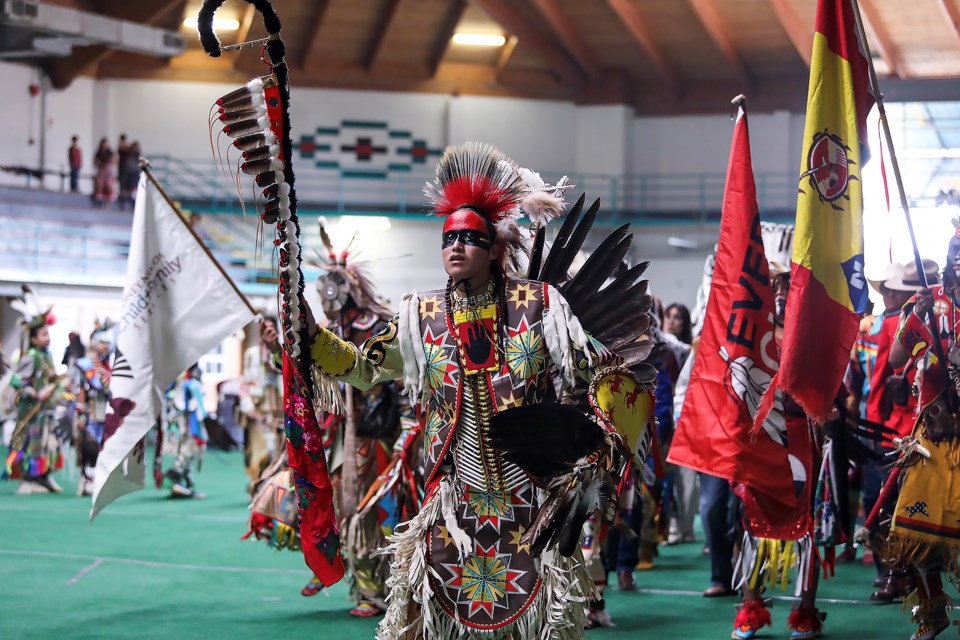ÎYÂRHE NAKODA – When three buffalo in Stoney Park were struck and killed in a lightning storm in 1987, three years after Mînî Thnî stopped hosting the Indian Ecumenical Conference, it was apparent to some that it was time to bring the influential movement back.
Each summer, from 1970 to 1984, Îyârhe Nakoda First Nation hosted the conference at Stoney Park, which began as an attempt at organizing grassroots spiritual leaders who were concerned about the conflict between tribal and Christian traditions throughout Indian Country.
Each year, the Nation would harvest one of its buffalo to help feed thousands of Indigenous peoples who travelled there to meet in a week-long encampment.
Rachel Snow said her father, the late Chief John Snow, saw the death of the three buffaloes struck by lightning as a sign.
“Because we didn’t have the conference for three years, Creation had killed these buffalo for us, to remind us that this is an important activity that we’re doing,” she said.
The conference was initially hosted in Crow Agency, Montana in 1969 with about 150 Indigenous peoples in attendance, but by the mid-1970s after Chief Snow volunteered to host it at Stoney Park, it had grown to 10,000 people, all gathered to promote spiritual revitalization and religious self-determination.
“It was a gathering of both church and non-church people,” said Snow, who was just seven years old when she attended the first conference with her father, who was also a minister of the United Church.
“I just remember being up in a tree and looking out at all these people gathered under canopies, talking.”
The conference played a vital role in revitalizing Indigenous cultures due to its unique approach to social change, differentiating them from more militant groups.
Different activities were happening across the camp. In addition to discussions around social issues, there was storytelling, women’s groups, hunting and trapping.
“It was like a cultural camp,” said Snow.
It was through the annual gathering, in 1971, that various elders involved with the Indian Ecumenical Conference (IEC) began lobbying the Canadian government for June 21 as a National Indian Day of Prayer.
“Everybody agreed to it, but it was also difficult to get that in front of government to set aside a day to do that,” said Bill Snow, acting director of consultation for Stoney Tribal Administration and brother to Rachel.
The idea was advocated for several years before a day of recognition came to be, but some say it lacks the elders’ original intent.
“The elders thought we need recognition that our spirituality is important,” said Snow. “It’s important because the day of prayer really would remind everyone that spirituality or prayer was very important to who we are as Indigenous people.
“That’s what was missing.”
That day of spiritual empowerment and unity eventually became recognized as National Aboriginal People's Day in 1996 and was renamed in 2017 to National Indigenous Peoples Day.
Snow said for those that practice their traditional ways, the month of June, or National Indigenous History Month, and June 21 are no different from any other time of the year.
She believes if June 21 had been established as an Indigenous day of prayer as intended nearly 30 years ago, some of today's issues, especially around environment, could have been better addressed.
“If mainstream Canada, the world, would understand the spiritual connection between First Nations peoples and the land, the plants, the animals, creation, then they might start to think this was a way of life that was worth pursuing. So that we didn’t damage or harm the waters, the climate, anything – that was the hope of the elders that were trying to get that spiritual message across,” said Snow.
“But it didn’t come across.”
While it’s nice to see recognition in the form of powwows and greater representation of Indigenous peoples on June 21, Snow said it’s hard to sometimes see the occasion as more than “beads and feathers” when she knows the goal of establishing a day was much greater.
But just by keeping traditions alive she continue to honour what elders at the conference preached.
“I think in many ways we keep that alive ourselves. There are sun dances, there’s people on the land doing cultural camps – this is consistently happening, whether it’s June or any other time – we’re just living it,” she said.
“There’s something valuable about the First Nations worldview, and that is the humility that we need to have when we’re talking about creation and all those powers that are greater than us.”
The conference started back up again around 1987, after the death of the three buffalos, but ended a few years later as more Indigenous peoples looked to host their own smaller gatherings without having to make the long pilgrimage to Mînî Thnî.
Bill said not many people know the history behind the IEC but that it should be a point of pride for the Îyârhe Nakoda community to know it played a part in developing the national holiday on June 21.
“It all started with a day of prayer,” said Bill. “That was the original idea, and it was partly our people and all the Indigenous peoples that gathered at the Indian Ecumenical Conference. That’s sort of a big part of its origin, but I don’t know that a lot of people here in Alberta or across Canada know that.”
The Local Journalism Initiative is funded by the Government of Canada. The position covers Îyârhe (Stoney) Nakoda First Nation and Kananaskis Country.




